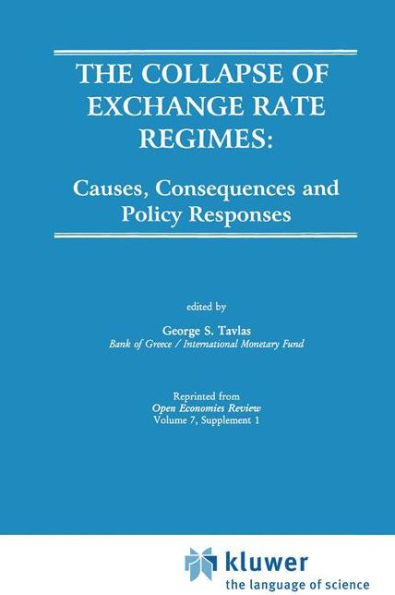The Collapse of Exchange Rate Regimes: Causes, Consequences and Policy Responses
ical) and to self-fulfilling currency crisis, respectively. Research stressing the former approach was pioneered by Krugman (1979) and Flood and Garber (1984). According to this line of research, the failure of governments to adopt domestic monetary and fiscal policies consistent with their stated exchange rate targets leads to a gradual diminution of reserves and eventually a sk adjustment that depletes reserves suddenly in one attack (Sachs, Tornell, and Velasco, 1996, page 47). The result is either a devaluation of the exchange rate or a switch to floating. Subsequent work of this genre has specified a number of other channels, in addition to that involving inconsistent and unsustainable monetary and fiscal policies, that can precipitate an attack: 1. Inconsistency between external and internal objectives. The stances of monetary and fiscal policies may be consistent with the authorities' exchange rate target, but domestic economic indicators (such as the unemployment rate) may be inconsistent with internal balance, resulting in pressures on the authorities to relax macroeconomic policies. Private agents, aware of this inconsistency, perceive an opportunity for profits from a currency devaluation and precipitate an attack. 2. Contagion effects. Prior to an attack on another currency (say that of country B), the market may view a country's (say, country A's) exchange rate as consistent with economic fundamentals and, thus, sustainable.
1113955050
The Collapse of Exchange Rate Regimes: Causes, Consequences and Policy Responses
ical) and to self-fulfilling currency crisis, respectively. Research stressing the former approach was pioneered by Krugman (1979) and Flood and Garber (1984). According to this line of research, the failure of governments to adopt domestic monetary and fiscal policies consistent with their stated exchange rate targets leads to a gradual diminution of reserves and eventually a sk adjustment that depletes reserves suddenly in one attack (Sachs, Tornell, and Velasco, 1996, page 47). The result is either a devaluation of the exchange rate or a switch to floating. Subsequent work of this genre has specified a number of other channels, in addition to that involving inconsistent and unsustainable monetary and fiscal policies, that can precipitate an attack: 1. Inconsistency between external and internal objectives. The stances of monetary and fiscal policies may be consistent with the authorities' exchange rate target, but domestic economic indicators (such as the unemployment rate) may be inconsistent with internal balance, resulting in pressures on the authorities to relax macroeconomic policies. Private agents, aware of this inconsistency, perceive an opportunity for profits from a currency devaluation and precipitate an attack. 2. Contagion effects. Prior to an attack on another currency (say that of country B), the market may view a country's (say, country A's) exchange rate as consistent with economic fundamentals and, thus, sustainable.
109.99
In Stock
5
1

The Collapse of Exchange Rate Regimes: Causes, Consequences and Policy Responses
247
The Collapse of Exchange Rate Regimes: Causes, Consequences and Policy Responses
247Hardcover(Reprinted from OPEN ECONOMIES REVIEW, 7:Sup.1, 1997)
$109.99
109.99
In Stock

Product Details
| ISBN-13: | 9780792398691 |
|---|---|
| Publisher: | Springer US |
| Publication date: | 12/31/1996 |
| Edition description: | Reprinted from OPEN ECONOMIES REVIEW, 7:Sup.1, 1997 |
| Pages: | 247 |
| Product dimensions: | 6.69(w) x 9.61(h) x 0.04(d) |
From the B&N Reads Blog
